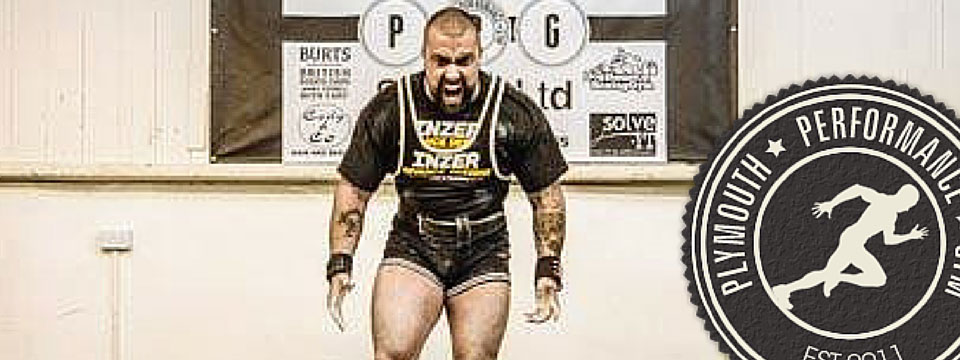
What do I mean by “speed work” and why would you do it? When I talk about speed work for strength athletes I’m referring to the method popularised by Louis Simmons, of Westside Barbell fame, which he described as using “sub-maximal weights with maximal speed…to increase the rate of force development and explosive strength, not to build absolute strength.” Now I know that that last sentence will have many of you scratching your heads, if it doesn’t build absolute strength why would it be of any interest to the traditional strength athlete? Bear with me while I try to explain.
Massive Amounts of Power
When we train for strength we are training to increase the force we can exert on an object, usually a barbell. In order to deadlift 250kg we must be capable of applying at least 250.1kg of force to the bar to get it to move at all. Power is the product of the force which we can produce and the speed at which we can summon it. What you may not know is that your muscles are already capable of producing massive amounts of power which could enable you to lift heavier weights than ever, if only you could tap into it.
Strength vs Speed
A ‘strong’ man who lacks power is like a car jack, capable of moving incredibly heavy objects, but only at slow speeds. On the flip side, an extremely ‘fast’ athlete who is weak can be likened to a bow and arrow, capable of moving light objects (like the arrow) at extremely high speeds, but without the strength to move anything heavier. The powerful athlete will have the strength of the car jack and the speed of the bow and arrow, capable of moving incredibly heavy objects fast. If you’ve ever watched any of the strongest men in the world warm up to deadlift you will see incredible displays of power: massive weights flying off the floor at astonishing speeds (check out the video of Eric Lillibridge warming up to a 900lb deadlift below). The beauty of tapping into your own power reserves is that you will be able to blast through sticking points and lift heavier weights using the muscle you already have! It’s simply a matter of teaching more of that muscle to work harder, faster and more efficiently than it currently knows how to do.
To understand how this is possible it helps to understand a little of how much untapped power potential we have contained in every one of our muscles.
Unleash Your Power Potential
Each muscle is made up of hundreds of muscle fibers. In simple terms when you perform an action, such as a squat, a signal is sent from your brain to the muscles required to perform that action, telling them to ‘switch on’ and contract. The power of that movement will depend on the number of muscle fibers that are recruited by the signal sent from your brain and the speed at which this happens.
Electric Shocks and Super Mums
No one can voluntarily recruit or ‘switch on’ all of the fibers in a muscle at once under normal circumstances. This is a protective mechanism designed to prevent muscle damage. You may, however, have heard stories of people thrown across rooms by electric shocks, or mothers who have lifted cars off their children after accidents. In the case of an accidental electric shock the electricity has not ‘thrown’ the person but has acted in a similar way to the electric signals which travel from your brain to your muscles when you want to move. With a powerful electric shock, the safety mechanism can be overridden. When the shock is received every muscle fiber in the legs is instantly contracted, effectively causing the recipient to ‘jump’ distances they would otherwise not be able to cover. In the case of the mother lifting a car off her child, adrenaline has acted in the same way, overriding the muscles defenses and unleashing their maximum potential.
Both of these examples illustrate the massive strength and power potential contained within our muscles and should help you to understand how we are able to lift more kilos without necessarily increasing size or body weight.
Power = Force x Velocity
Without the dubious benefit of massive electric shocks or terror induced adrenaline an untrained person will be able to recruit no more than around 60% of their muscle’s potential strength voluntarily. By training with heavy loads at relatively slow speeds we are able to train the muscle to ‘switch’ on more of its fibers, tapping into strength reserves which were previously unavailable to us. By also training with relatively lighter loads at very high speed we are able to teach these stronger muscles to contract extremely quickly, increasing the ‘Rate of Force Development’ (RFD) giving us the strength of the car jack with the speed of the bow and arrow!
“But I Just Want to Lift Massive Weights!”
“But”, I hear you say, “I don’t want to be the best at at lifting light weights really, really quickly, I just want to lift massive weight, and I don’t care how long it takes!” A fair point, but don’t forget that the majority of us can identify ‘sticking’ points in our lifts. Take the powerlifter who always misses his deadlift just below the knee. He can usually lift supra maximal weights from above the knee (in rack pulls, block pulls etc.) and can clearly get the weight off the floor for us to have discovered this ‘sticking’ point in the first place, but he grinds to a juddering halt just below the knee every time. If he can increase the speed at which the weight comes off the floor, learn to blast it up, the momentum gathered can carry him clean through this troublesome sticking point to a new Personal Record (PR).
Adding Speed Work to Your Programme
The easiest way to incorporate speed work into your training is to start practicing it in your warm ups. Instead of just going through the motions with the lighter weights start trying to launch them up. Every time you squat, press or deadlift practice applying as much force to the bar as you can, as quickly as you can. Imagine that 80kg warm up weight is 300kg and lift it violently. Have another look at the video of Eric Lillibridge working up to a 900lb (410kg) deadlift. Look at the way he pulls his first warm up rep of 405lb (185kg). 185kg is 45% of the weight he ended up pulling that day, the equivalent of 90kg for a 200kg deadlifter. How many of you put that amount of preparation, commitment and effort into lifting weights that are 45% of your max? Not many I would guess? Many of the strongest lifters in the world do.
You can also add dedicated speed sessions to your training schedule. Keep the reps low as you want to put maximum effort into every one, 8 sets of 3 with 70% of your 1 rep max is a good place to start. This will ‘train’ your muscles to summon your strength faster and condition them to apply a higher ‘rate of force development’.
I know there are many people out there who are skeptical as to the benefits of dedicated speed work but hopefully I’ve done enough to inspire one or two of you to give it a try. Who knows, it just might work.
If you’ve got any questions or comments about speed work and how it can help you to #BeMoreAwesome add them in the comments section below.
How to #BeMoreAwesome
If you would like help incorporating speed work into your training program contact Will or just drop in to Plymouth Performance Gym.

